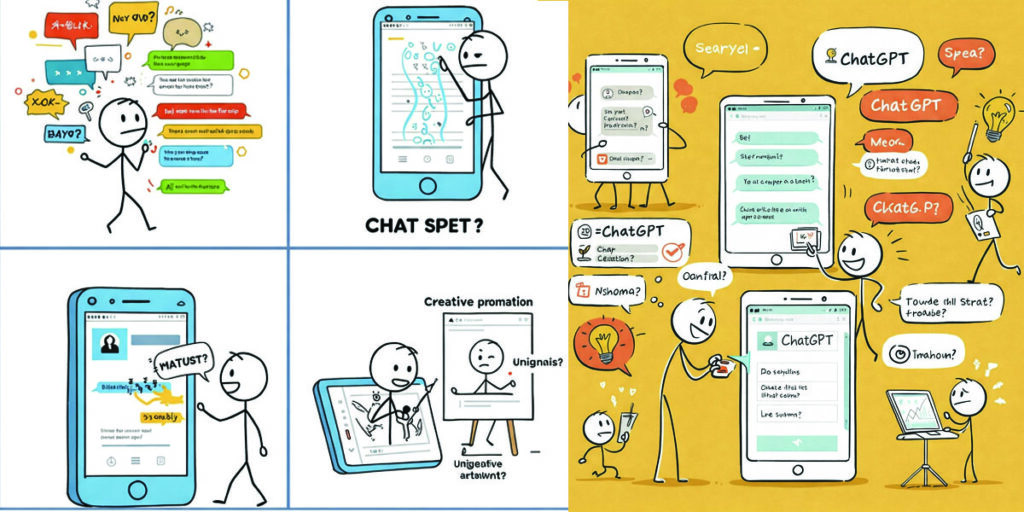Interactive storytelling AI that allows users to create open-ended adventures.
AI Dungeon emerged onto the digital landscape not just as a game, but as a revolutionary concept in interactive storytelling, leveraging the nascent power of large language models to create truly open-ended adventures. Unlike traditional text-based games with predefined paths and limited responses, AI Dungeon offered players the unprecedented ability to type literally anything and have the artificial intelligence attempt to continue the narrative in a coherent, often surprising, and uniquely personal way. This freedom ignited the imaginations of countless users, pushing the boundaries of what was thought possible in human-computer collaboration for creative expression.
From its humble beginnings as a hackathon project, AI Dungeon has evolved significantly, navigating technical challenges, adapting its business model, and fostering a vibrant, albeit sometimes contentious, community. Its journey provides a fascinating case study in the rapid development and deployment of AI technologies in entertainment, the complexities of monetizing such dynamic systems, and the crucial role of community in shaping the user experience.
The Genesis of Infinite Possibilities: A History of AI Dungeon
The story of AI Dungeon begins with Nick Walton, who conceived the core idea during a hackathon. Inspired by the potential of early large language models, specifically OpenAI’s GPT-2, Walton envisioned a game where the narrative wasn’t written by designers but generated on the fly by AI, responding to player input in real-time. This fundamental concept – that the player’s imagination, translated into text commands, could steer the story in any direction – was a paradigm shift for interactive fiction.
The initial prototype, powered by GPT-2, demonstrated the viability of this approach. While GPT-2 was a significant step forward in language generation at the time, it had limitations in terms of coherence and long-term memory, often leading to illogical or repetitive outputs. Despite these technical hurdles, the sheer novelty and freedom offered by the game quickly garnered attention. It spread rapidly through word-of-mouth and social media, attracting a diverse user base eager to explore the possibilities of AI-driven storytelling. The early days were marked by a sense of wonder and experimentation as players pushed the boundaries of the AI, deliberately trying to break the narrative or lead it into absurd scenarios, often with hilarious and unexpected results.
The viral success of the prototype led to the formation of Latitude, the company founded by Nick Walton and his collaborators to further develop and support AI Dungeon. As the user base grew, so did the demands on the underlying technology. The limitations of GPT-2 became more apparent with increased usage and the desire for more complex and consistent narratives. This drove Latitude to explore more powerful language models.
A significant turning point came with access to OpenAI’s GPT-3. This much larger and more sophisticated model offered a dramatic improvement in text generation quality, coherence, and the ability to maintain context over longer periods. Integrating GPT-3 (or later versions/variants) became a key focus for Latitude, leading to the introduction of premium tiers that offered access to these more advanced models. This move, while necessary for improving the core experience, also marked the beginning of the evolution of AI Dungeon’s economic model.
However, the journey wasn’t without its significant challenges and controversies. The open-ended nature of AI Dungeon, while its greatest strength, also presented a major problem: content moderation. With players able to input anything, the AI could potentially generate inappropriate, offensive, or harmful content. Latitude grappled with the difficult task of implementing content filters and moderation policies to create a safer environment without stifling the creative freedom that defined the platform. This led to periods of user frustration and backlash as moderation efforts sometimes felt heavy-handed or inconsistent, occasionally interrupting innocent narratives. The balance between complete creative freedom and responsible AI deployment remains a complex issue in the field, and AI Dungeon’s experiences have been a prominent example of this struggle.
Beyond content moderation, technical issues like maintaining narrative consistency over very long adventures and preventing the AI from falling into repetitive loops or generating nonsensical outcomes have been ongoing challenges. Latitude has continuously worked on refining its AI infrastructure, developing internal tools, and fine-tuning models to improve the user experience.
Over time, AI Dungeon expanded its reach beyond the initial web-based interface, launching mobile applications to make the platform more accessible. They also introduced features like multiplayer modes, allowing groups of friends to collaboratively build stories with the AI, further enhancing the social and interactive aspects of the game. The history of AI Dungeon is a testament to the iterative nature of software development and the challenges and opportunities that arise when deploying cutting-edge AI technology to a broad consumer audience. It’s a story of innovation, rapid growth, technical hurdles, and the ongoing effort to refine a truly novel form of entertainment.
Navigating the Digital Realm: The Economic Market of AI Dungeon
AI Dungeon’s unique value proposition – the ability to generate infinite, personalized stories – laid the foundation for its economic model. Initially, the platform was largely free to use, serving as a showcase for the capabilities of the underlying AI technology. However, running sophisticated language models, especially large ones like GPT-3 and beyond, incurs significant computational costs. To sustain the platform and continue development, Latitude needed a viable business model.
The chosen approach was a freemium model, offering a free tier with basic access and introducing premium subscriptions with enhanced features. This model has become common among AI-powered applications, balancing accessibility with the need for revenue generation. The free tier typically allows users to play adventures using less powerful or slightly slower AI models, often with limitations on the length of context the AI remembers.
The core of AI Dungeon’s monetization lies in its tiered subscription system. These tiers are designed to cater to different levels of user engagement and demand for AI power. Common features offered in premium subscriptions include:
- Access to More Powerful AI Models: Subscribers gain access to larger, more advanced language models (like different versions or fine-tunes of GPT, Mixtral, Llama, and potentially proprietary models developed by Latitude). These models generally provide more coherent, creative, and context-aware responses. As of May 2025, AI Dungeon offers a range of models including MythoMax and Tiefighter in the free tier, and Mixtral, Llama 3 70B, WizardLM 8x22B, and GPT-4 Turbo in premium tiers, with GPT-4 Turbo being the most advanced and often requiring additional credits for extensive context.
- Increased Context Window: Premium tiers offer a larger “memory” for the AI, allowing it to remember more of the preceding story. This is crucial for maintaining narrative consistency over longer adventures. Different tiers offer varying context window sizes, with the highest tiers providing substantially more memory.
- Faster Generation Speeds: Access to premium models often comes with higher processing priority, resulting in quicker response times from the AI.
- Higher Usage Limits or Unlimited Actions: While the free tier might have limitations on the number of actions a user can take within a certain time frame, premium tiers typically offer significantly higher limits or unlimited actions, allowing for uninterrupted gameplay.
- Additional Features: Premium subscriptions may include bonus features such as access to advanced settings for fine-tuning AI behavior, the ability to generate AI-powered images within the story (often using a credit system), and potentially early access to new features. Credits for image generation or larger context windows on certain models are often bundled with subscriptions or available for separate purchase.
Latitude has adjusted its subscription tiers and pricing over time, experimenting with different bundles of features and model access to find the right balance between value for users and sustainable revenue. As of May 2025, typical tiers might include names like Wanderer (Free), Adventurer, Champion, Legend, and Mythic, each offering progressively more features, especially access to better AI models and larger context windows. The pricing for these tiers varies, with options for monthly or annual subscriptions.
The target market for AI Dungeon is diverse, encompassing gamers who enjoy unique and emergent experiences, writers looking for a creative tool to overcome writer’s block or explore new narrative ideas, role-playing enthusiasts who appreciate the flexibility of an AI dungeon master, and general users curious about the capabilities of generative AI.
In the broader market landscape, AI Dungeon operates within the intersection of interactive fiction, AI writing tools, and AI-powered gaming. Its competitors include other AI storytelling platforms like NovelAI, which also offers subscription-based access to advanced language models with a focus on creative writing and customization, as well as more traditional interactive fiction platforms and developers experimenting with AI in games. The competitive landscape is dynamic, with new AI-powered creative tools emerging frequently.
Latitude, the company behind AI Dungeon, has secured funding to support its development and growth. Publicly available information indicates that Latitude has raised seed funding from investors such as NFX and Album VC. This investment has been crucial for scaling the team, acquiring access to powerful AI models, and improving the platform’s infrastructure.
The revenue streams for Latitude primarily come from its subscription services. While the exact breakdown of revenue per tier or the overall profitability is not publicly disclosed, the subscription model with varying levels of access to expensive AI resources is a clear indicator of how the company sustains its operations. The introduction of credit-based systems for features like image generation or ultra-high context windows adds another layer to the monetization strategy, allowing users to pay for specific, resource-intensive actions beyond their base subscription.
The economic future of AI Dungeon, and similar platforms, will likely depend on several factors: the continued improvement and cost reduction of large language models, the ability to offer compelling value propositions at different price points, and successful navigation of ethical and content moderation challenges that could impact user growth and retention. The evolving nature of AI technology means that the platform’s offerings and pricing will likely continue to adapt.
Building Worlds Together: Networking and Community in AI Dungeon
Beyond the core AI-driven single-player experience, AI Dungeon has cultivated a significant community aspect, recognizing that shared experiences and creative collaboration are powerful drivers of engagement. This networking element adds depth and social interaction to the otherwise solitary act of playing a text adventure.
One of the most prominent networking features is the platform’s support for user-generated content. Players can create and publish their own scenarios, setting up initial premises, characters, and world details for others to play within. This allows for an ever-expanding library of diverse adventures, ranging from classic fantasy quests to surreal abstract experiences, all crafted by the community. Users can browse, play, rate, and provide feedback on these scenarios, fostering a collaborative ecosystem of content creation and discovery. This not only provides fresh content for players but also encourages creativity and sharing among the community.
AI Dungeon also actively fosters its community through various external platforms. Discord servers are a central hub for real-time interaction, allowing players to chat, share their adventure snippets, get help, discuss AI behavior, and connect with developers. Forums and social media channels (like X/Twitter and potentially others) serve as spaces for broader discussions, announcements, and sharing notable or humorous AI-generated moments. These platforms enable a sense of belonging and provide avenues for users to feel connected to the development and evolution of the game.
A key feature that directly enables networking within the game is multiplayer mode. This allows multiple players to join the same adventure, taking turns interacting with the AI and collaboratively shaping the narrative. One player might act, and the AI responds, then another player takes their turn, adding their actions or dialogue to the evolving story. This transforms the typically single-player experience into a shared creative endeavor, enabling collaborative role-playing and unpredictable group dynamics guided by the AI. While setting up and managing multiplayer sessions can sometimes have its own complexities, the feature provides a unique way for friends or online acquaintances to experience AI Dungeon together.
The networking aspects extend to how users learn from and influence each other. Through community discussions, players share tips and tricks for interacting effectively with the AI, understanding how different prompts can lead to varied outcomes, and navigating the occasional quirks of the language models. This collective intelligence helps users get the most out of the platform and improve their “prompt engineering” skills, essentially learning how to better communicate with the AI to achieve desired narrative results.
While AI Dungeon’s primary focus is on the user interacting with the AI, the community features create a vital layer of human-to-human interaction around the core experience. This includes:
- Sharing Adventures and Stories: Players often share particularly memorable, funny, or bizarre moments from their solo adventures on community platforms, leading to shared laughter and discussion.
- Seeking and Giving Advice: New players can seek guidance from more experienced users on how to overcome challenges in their adventures or improve their prompting techniques.
- Organizing Collaborative Projects: The community can organize themed scenario creation events or multiplayer game sessions centered around specific ideas or genres.
- Providing Feedback to Developers: Community forums and channels serve as valuable sources of feedback for Latitude, informing them about bugs, desired features, and areas where the AI or platform could be improved. This direct line of communication, while sometimes challenging to manage with a large user base, is crucial for iterative development.
The controversies surrounding content moderation also highlighted the strength and sometimes the friction within the community. When changes were made that impacted creative freedom, the community was vocal in its criticism and demands for transparency and better solutions. This demonstrates the passionate nature of the user base and their investment in the platform’s core promise of open-ended creativity.
While AI Dungeon doesn’t typically offer a public API for developers to build upon (unlike some other AI platforms), its focus has been on providing the interactive storytelling experience directly to consumers. The networking primarily happens around the core game through the community platforms and within it through features like multiplayer and shared scenarios.
The influence of the AI Dungeon community extends beyond just the platform itself. The creative scenarios and interactions shared by users serve as examples of the diverse ways generative AI can be used for storytelling and entertainment, potentially inspiring other developers and users of AI technologies.
In summary, the networking and community aspects are integral to the AI Dungeon experience. They transform it from a solitary interaction with an AI into a shared hobby and creative outlet, fueled by user-generated content, external community platforms, and in-game collaborative features. This community plays a vital role not only in enhancing the user experience but also in providing feedback and contributing to the platform’s ongoing evolution.
The Engines of Imagination: Technology Behind AI Dungeon
The heart of AI Dungeon lies in its utilization of advanced large language models (LLMs). These complex neural networks are trained on massive datasets of text and code, enabling them to understand and generate human-like language. The ability of LLMs to process context, predict the next word or sequence of words, and generate coherent and creative text makes them ideal for interactive storytelling.
AI Dungeon’s technological journey has mirrored the rapid advancements in the field of generative AI. As mentioned earlier, it started with OpenAI’s GPT-2. While groundbreaking at the time, GPT-2 had a relatively limited parameter count and context window compared to modern LLMs. This often resulted in the AI losing track of the narrative, repeating itself, or generating illogical responses, particularly in longer adventures.
The transition to larger models, notably variants of GPT-3 and later, represented a significant leap in capabilities. These models possess billions or even trillions of parameters and can handle much larger context windows, allowing them to remember more of the story and generate more consistent and detailed narratives. The different AI models offered within AI Dungeon’s premium tiers reflect the varying sizes and architectures of these LLMs, with larger models generally providing higher quality but also incurring greater computational costs. As of May 2025, the range of models available demonstrates Latitude’s commitment to integrating powerful, state-of-the-art LLMs, including open-source options like Mixtral and Llama variants, as well as potentially proprietary or fine-tuned models, and access to commercial models like GPT-4 Turbo.
Implementing these LLMs in an interactive, real-time environment like AI Dungeon involves several technical considerations:
- Prompt Engineering: When a user types an action or command, AI Dungeon’s system needs to format this input into a prompt that the LLM can understand and process effectively. This involves combining the user’s input with the relevant preceding text from the story to provide context. The quality of the prompt directly influences the quality of the AI’s response. Latitude likely employs sophisticated prompt engineering techniques to optimize the interaction with the different models.
- Context Management: Maintaining a coherent narrative requires the AI to remember the relevant details of the story so far. LLMs have a limited context window, meaning they can only consider a certain amount of preceding text when generating the next response. AI Dungeon’s system manages this context, feeding the most relevant parts of the story to the AI with each turn. Premium tiers offering larger context windows directly leverage the capabilities of more advanced LLMs.
- Generating Multiple Responses and Selection: To increase the likelihood of generating a good response and to potentially filter out undesirable content, AI Dungeon’s backend might generate several possible continuations using the LLM and then select the most appropriate one based on internal criteria or potentially user preferences.
- Fine-tuning and Customization: While AI Dungeon utilizes general-purpose LLMs, Latitude likely employs fine-tuning techniques to adapt these models specifically for narrative generation. This involves training the models on datasets of interactive fiction or story examples to encourage them to generate more engaging, creative, and relevant text within the context of an adventure game. Users also have some level of control through in-game settings to influence the AI’s behavior, such as adjusting the “temperature” setting to control the randomness and creativity of the output.
- Handling Nonsensical or Harmful Output: Despite the power of LLMs, they can still generate nonsensical, repetitive, or even harmful content. AI Dungeon’s system includes mechanisms to mitigate this, including the content filters discussed earlier and potentially techniques to detect and reroll or modify problematic outputs. This remains an ongoing technical and ethical challenge.
- Scalability and Infrastructure: Running a service that handles real-time text generation for a large number of users requires a robust and scalable infrastructure. Latitude needs to manage computational resources effectively, likely utilizing cloud computing platforms, to provide a responsive experience to players worldwide. The cost of running powerful LLMs is a significant operational expense, directly influencing the business model and the need for subscriptions.
The introduction of image generation capabilities further adds to the technological complexity, requiring integration with AI image models like Stable Diffusion and DALL-E variants. These models translate textual descriptions from the game or user input into visual representations, adding another dimension to the interactive experience.
The future of AI Dungeon’s technology will be closely tied to the advancements in the broader field of AI. As LLMs become more powerful, efficient, and capable of maintaining longer-term coherence, the potential for AI Dungeon to create even more immersive and believable interactive narratives will grow. Research into areas like AI memory, planning, and character consistency will directly benefit platforms like AI Dungeon.
In essence, AI Dungeon is a living example of applied AI research and development. It takes cutting-edge language models and integrates them into a consumer-facing application, continuously working to improve the user experience by leveraging new AI capabilities while simultaneously grappling with the inherent limitations and challenges of the technology.
Impact and Future: Shaping Storytelling and AI in Entertainment
AI Dungeon has had a tangible impact on how people perceive and interact with AI, particularly in the realm of creativity and entertainment. It demonstrated that AI could be more than just a tool for analysis or automation; it could be a collaborative partner in the creative process, capable of generating novel and engaging content on demand.
The platform has inspired countless users to explore their own creativity, providing a low-barrier-to-entry tool for experimenting with storytelling, character development, and world-building. It has empowered individuals who might not consider themselves writers to craft intricate narratives simply by interacting with the AI. This democratization of storytelling, enabling anyone with an idea to see it unfold in real-time, is a significant impact.
AI Dungeon has also played a role in shaping the public understanding and expectations of generative AI. Its viral popularity introduced many people to the capabilities (and limitations) of large language models in a fun and accessible way. The sometimes-absurd or unexpected outputs from the AI became fodder for online discussions and memes, highlighting both the potential and the current imperfections of the technology.
Looking to the future, AI Dungeon and similar platforms are poised to continue influencing the landscape of entertainment. As AI models become more sophisticated, we can anticipate:
- More Coherent and Consistent Narratives: Future AI models are likely to have improved long-term memory and planning capabilities, reducing instances of the AI contradicting itself or losing track of the plot over extended play sessions.
- Enhanced Character Consistency: AI could become better at maintaining consistent character personalities, motivations, and relationships throughout an adventure, leading to more believable interactions.
- Richer World Simulation: Beyond text, future versions could potentially integrate more sophisticated world simulation, allowing for more complex interactions with the environment and non-player characters.
- Multimodal Experiences: The integration of image generation is just one step. Future developments might include AI-generated audio, music, or even simple animations to further enhance the immersive experience.
- More Sophisticated Multiplayer: Collaborative storytelling features could become more refined, with better tools for managing group dynamics and ensuring everyone feels involved in shaping the narrative.
- Increased Customization and Control: Users may gain even more granular control over the AI’s behavior and the parameters of the world, allowing for highly tailored experiences.
- Expansion into Other Genres and Media: While AI Dungeon started with fantasy, the underlying technology is applicable to any genre. We might see AI-powered interactive experiences emerge in various forms, including potentially more visually rich games where AI generates not just text but also elements of the game world.
However, the future also holds challenges. As AI becomes more capable, the ethical considerations surrounding content generation, ownership of AI-generated content, and the potential for misuse will become even more critical. Platforms like AI Dungeon will need to continue investing in robust moderation systems and transparent policies while balancing these with the desire for creative freedom.
The economic models will also need to adapt. As AI models become more powerful, they may also become more computationally expensive to run, requiring continued innovation in efficiency and monetization strategies. The competitive landscape will likely intensify as more companies enter the AI-powered entertainment space.
AI Dungeon’s journey from a hackathon project to a prominent interactive storytelling platform highlights the transformative potential of AI in entertainment. Its history demonstrates the rapid progress in language models and the challenges of applying this technology at scale. Its economic model reflects the costs and value of providing access to powerful AI. And its vibrant community underscores the human desire to connect, create, and explore infinite possibilities together, guided by the hand of artificial intelligence. As AI continues to evolve, AI Dungeon stands as a compelling example of how this technology can fundamentally change the way we experience and create stories.
The ability to simply describe a desired action or outcome and have the AI react and continue the narrative has opened up entirely new avenues for creative expression and spontaneous adventure. Whether exploring a dark dungeon, navigating political intrigue in a fantasy kingdom, or surviving a zombie apocalypse, the AI’s ability to generate unique responses based on user input ensures that no two adventures are ever truly the same. This inherent replayability and the feeling of genuine agency are core to AI Dungeon’s appeal and a key driver of its continued relevance in the evolving landscape of digital entertainment. The platform is not just a game; it is an experiment in collaborative creativity between humans and artificial intelligence, pushing the boundaries of what interactive storytelling can be.




















